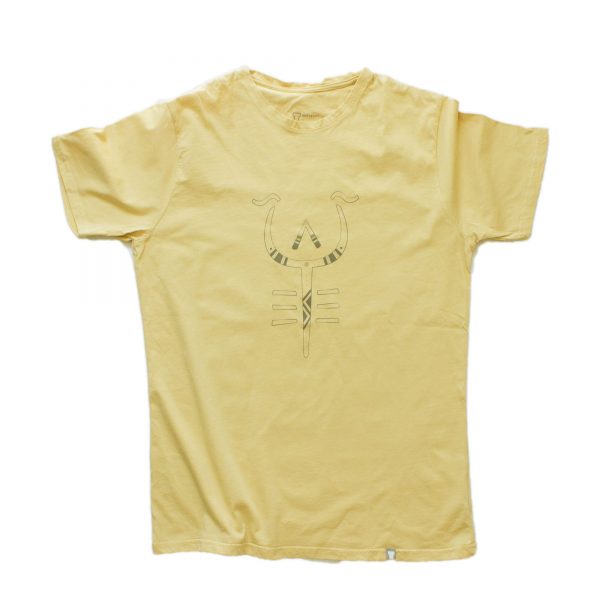> Main story
notes in linear b
by vasileios mavrikios
human / artist / designer
the decipherment of linear b, the earliest adaptation of greek language into a script, revealed a world of laborious palace administration, widespread trade, religious offerings and military campaigns. it was a syllable based script with numerous ideograms, which flourished and declined along with the mycenaean civilization (1600–1100 bc). this series depicts characteristics of its cultural signature through a selection of prominent ideograms decorated with geometric period motifs, in a combination of linguistic and artistic elements of that time.
> Tee story
04 crocus
the saffron spice, product of the crocus flower, was handpicked by women for its vivid yellow color as a dye for luxurious textiles. it was celebrated for its medicinal benefits and traded throughout the Mediterranean as a valuable economic commodity. 400 manhours are still required to produce 1 kilo of saffron.
Other Tees of this story :
03 / gold
02 / woman
01 / man
crocus
35.00€
100% natural cotton
pre-washed/softened
designed & fabricated
in Nafplio/Greece
> Main story
notes in linear b
by vasileios mavrikios
human / artist / designer
100% natural cotton
pre-washed/softened
designed & fabricated
in Nafplio/Greece
> Tee story
04 / crocus /
the saffron spice, product of the crocus flower, was handpicked by women for its vivid yellow color as a dye for luxurious textiles. it was celebrated for its medicinal benefits and traded throughout the Mediterranean as a valuable economic commodity. 400 manhours are still required to produce 1 kilo of saffron.


